Is Star Trek: Picard’s Hypothesized ‘Octuple Star System’ Really Possible?
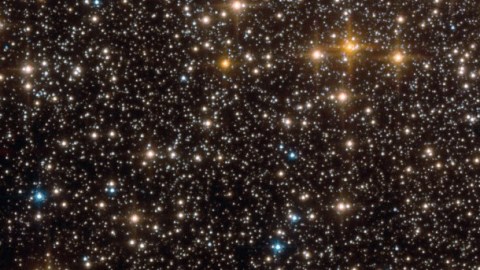
We’ve never found eight stars bound together in the same stable system. But nature might make it so.
The Universe that we have is often more wondrous and bizarre than even our wildest science fiction dreams can imagine. The nature and composition of the tiniest quanta of matter, the origin and fate of the Universe, and the unseen, dark components of reality are all examples of scientific facts that no one could have imagined. Of all the inspired dreams that humanity has had about where our technological and scientific advances would take us, Star Trek has perhaps been the most visionary.
Star Trek’s newest incarnation — Star Trek: Picard — recently put forth a novel idea that goes beyond the limits of scientific knowledge. While we know that multi-star systems are quite common in the Universe, this new sci-fi series put out the wild idea of an octuple star system. Not only was it artificially created, according to Star Trek: Picard, but there’s a planet at the center of it, containing a warning to all who may come after. Here’s the real-life science on whether it’s actually possible.
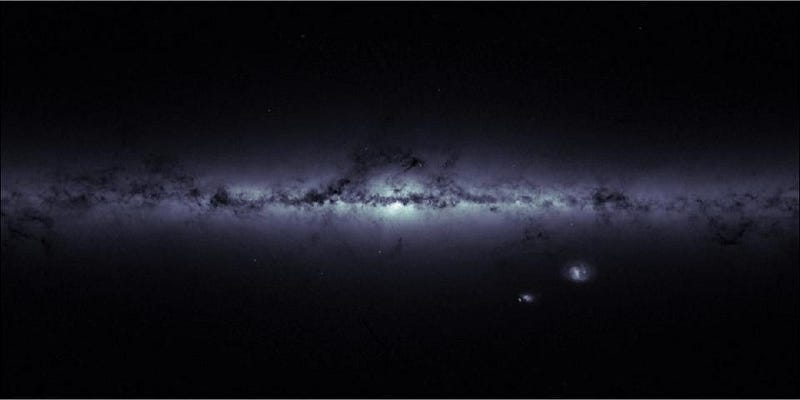
When we look out at the points of light we find throughout the sky, almost everything we see is a star. With some 400 billion of them in the Milky Way alone, it appears that each one of these minuscule pinpricks of light is a star all unto itself. But that’s not the full story at all.
Starting in 1994, the REsearch Consortium On Nearby Stars (RECONS) collaboration was formed, to investigate and learn about the nearest stars to Earth. Over the past 25 years, they’ve extended their search out to a distance of 25 parsecs (about 82 light-years), identifying and measuring more than 2,000 star systems close to home. While almost 75% of the systems turned out to be similar to our own Solar System — with just a single star anchoring the remainder of the system — it turned out that the remaining multi-star systems contain about half of the overall stars.
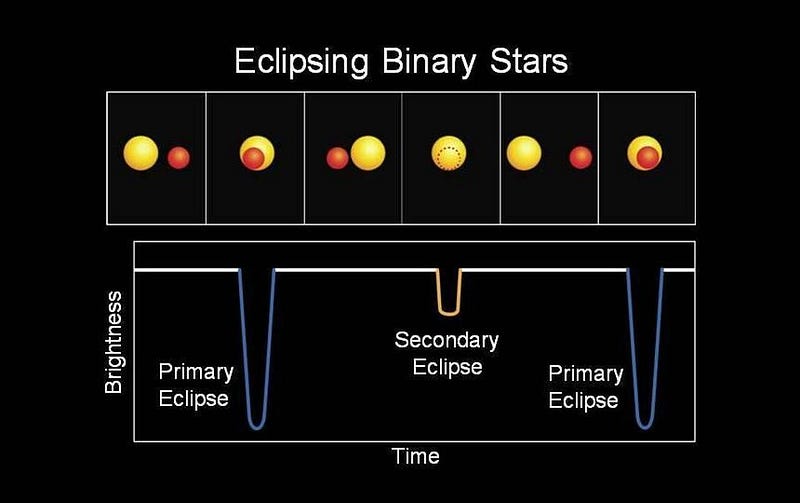
According to RECONS, there are a total of 2,168 star systems within 82 light-years of Earth. When you break them down, however, by the number of stars in each system, here’s what you find:
- 1533 single star systems,
- 509 binary systems,
- 102 triple systems,
- 19 quadruple systems,
- 4 quintuple systems, and even
- 1 sextuple system.
All told, that’s 2,959 stars within 82 light-years of us, and nearly half of them (1,416 out of 2,959, or 48%) are part of multi-star systems.
In particular, that sextuple system, Castor, has been an object of astronomical interest since ancient times, as it’s the 24th brightest star system in Earth’s entire night sky. Located at a distance of merely 51 light years away, it shows us a template for how to have so many stars bound together in a single system.
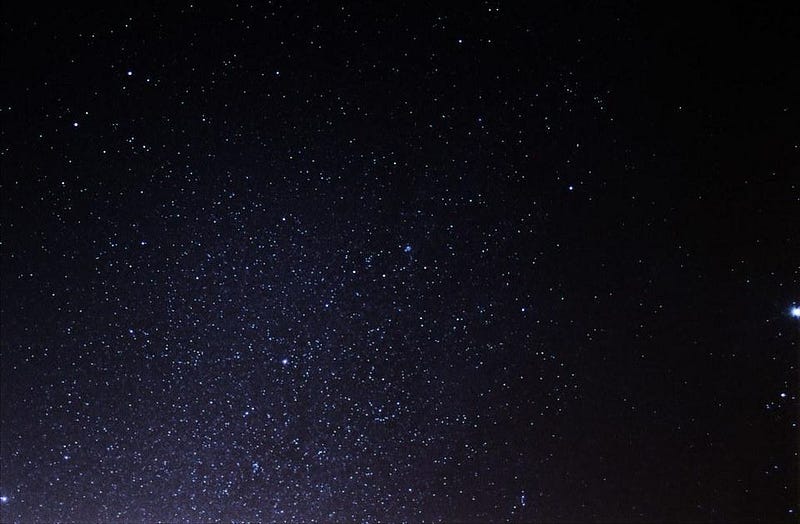
Castor is made of six individual stars that are bound together in three independent visual components. The brightest component, Castor A, is a tight binary system made up of two stars orbiting one another with a period of just 9.2 days. The second brightest component, Castor B, is also made of two stars that orbit each other very quickly: with a period of 2.9 days. Both Castor A and B consist of a bright young star, similar in brightness and color to Sirius, orbiting a faint red dwarf star.
The Castor A and Castor B systems are bound together, but are widely separated from one another; it takes an estimated 445 years for Castor A and Castor B to complete an orbit around one another. But Castor C, the third component, is another tight binary, this time made of two red dwarf stars. Although they orbit each other incredibly quickly, with a period of 19.5 hours, the Castor C system takes a whopping 14,000 years to complete a revolution around Castor A and B.

Gravitationally, you can paint a picture in your head of what’s going on. Wherever you would have a single star, you could pack two stars in there so long as they were at or interior to the orbit of Mercury in our own Solar System. These tight binary systems make it difficult to have another object orbiting close by, but so long as you’re far enough away from both systems (say, at the orbit of Saturn or beyond), you could have another massive object there.
This leads us to our first visualization of what an octuple star system could look like. Imagine it as follows:
- four tight binaries (A, B, C, and D), each with a short period of just a few days for their binary orbits,
- with two pairs (A and B, C and D) orbiting one another at large distances on solar system scales: at or somewhat beyond the separation of the gas giants from our Sun),
- with those two quadruple systems (the A and B binaries and the C and D binaries) very well-separated from one another, orbiting their mutual center-of-mass.
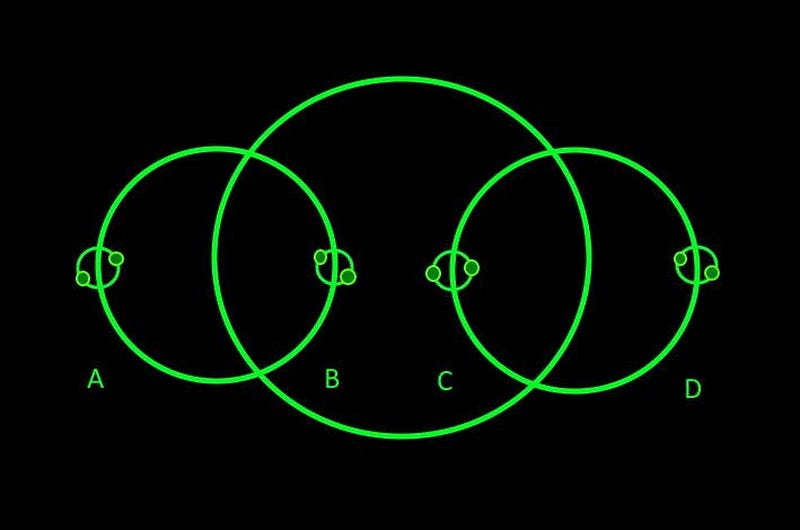
Of course, we haven’t yet found a star system that has 8 independent stars in it, all bound together, in this or any other configuration. But we have discovered two examples of septuple star systems, although both are more distant than the nearby RECONS survey. These two star systems, AR Cassiopeiae and Nu Scorpii, are both a few hundred light-years away and even visible to the unaided human eye.
AR Cassiopeiae consists of a short-period (6 day) eclipsing binary that’s bound to a third bright star slightly farther away, which in turn is bound to two other pairs of stars, bringing the total to seven.
Nu Scorpii, on the other hand, consists of a remarkable arrangement: two tight binaries each with a more distant trinary companion, where one of them is bound to another massive star (forming a quaternary system) which in turn is bound to the other trinary.

These systems are the only two septuple star systems known, but they’re also still relatively close by. AR Cassiopeiae is an estimated 620 light-years away, while Nu Scorpii is about 470 light-years away. Only a few million stars existing within 1,000 light-years of Earth, representing less than 0.01% of the stars in the Milky Way.
If multiple septuple systems number among the few thousand stars (out of ~400 billion in the Milky Way) visible to the naked eye, it seems like it would be an incredible coincidence if octuple (or nonuple) systems didn’t spontaneously occur in nature. After all, in the Nu Scorpii system alone, the gravitational dynamics would have worked out just fine — i.e., the system would still remain stable — if either Nu Scorpii B or Nu Scorpii C (or both) were short-period binaries on their own.
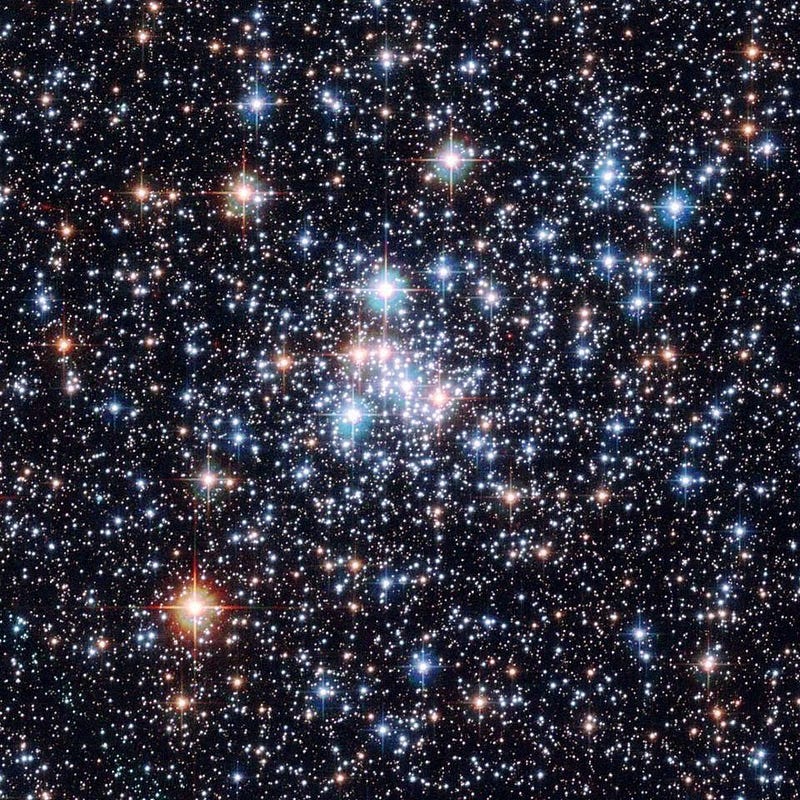
We don’t even need the Star Trek conceit that an intelligent alien civilization placed these stars into their present configuration; octuple systems may not have been revealed in nature just quite yet, but they should exist with some non-negligible frequency. With hundreds of billions of stars in the Milky Way to work with, it would be quite a surprise if there weren’t at least thousands, if not hundreds of thousands or more, of octuple systems in our own galaxy.
What would be surprising, however, would be the prospect of finding a planet (or any object) at the mutual center-of-mass of all the stars combined. That’s the big conceit of the show: that the eight suns exist around a planet known as Aia: the Grief World, which contains a machine that was built hundreds of thousands of years ago. The purpose of the machine was to warn future civilizations against the development of synthetic life.

Whether the development of synthetic life will ultimately prove to be humanity’s undoing is a question that it makes sense to explore in the realm of science fiction, as the uses (and abuses) of artificial intelligence are an ethical question we’re still in our infancy of exploring today. But the presence of a planet at the center-of-mass of an octuple star system is a perfect question for the science of gravitational dynamics.
We have a perfect analogue for this type of question in our own Solar System: the five Lagrange points that exist around any planet orbiting the Sun. The Lagrange points are locations where the gravitational forces of the Sun and the planet all cancel, leaving the object in orbit around the Sun with the same period as the planet. For two of those points (L4 and L5), the object can be stable and remain there permanently. For the others (L1, L2, and L3), the location is unstable. Without constant orbital corrections, the object will become gravitationally unstable and will be ejected in short order, at least on astronomical timescales.

What does this mean for Aia, the Grief World that serves as a warning to future civilizations? It means it’s most likely that the octuple star system is the naturally occurring entity that they found and chose as prime real estate for this beacon, and then they moved a single planet, rather than a series of stars, to this one quasi-stable location.
By equipping the planet with a series of thrusters, just as we equip the spacecraft we put at the Sun-facing (L1) and Sun-opposed (L2) Lagrange points with thrusters, it could maintain its position relative to the other stars over time, even over hundreds of thousands of years. It’s easily possible to have 8, 9, or even greater numbers of stars all bound together in the same system for millions or even billions of years.
But if you want a planet located at the center-of-mass of all of them? That cannot occur naturally. If someone were interested in minimizing the energy required to construct such a system, however, they’d spend their energy moving and refining a single planet, rather than manipulating eight different objects of much greater mass that were as hard-to-handle as stars are. Star Trek: Picard may have gotten the sci-fi aspect of this system right, but those ancient builders of the Aia system made an incredibly wasteful decision if chose to move multiple stars around, rather than a single low-mass planet.
Ethan Siegel is the author of Beyond the Galaxy and Treknology. You can pre-order his third book, currently in development: the Encyclopaedia Cosmologica.





